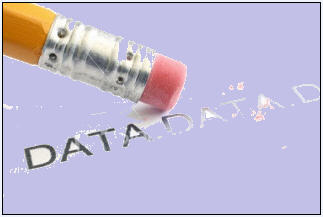Data sanitization is an integral part of secure data management, which is typically required when you need to dispose of your hard drive to throw away an old system. This is done by overwriting the drive multiple times to remove all the evidences of data remanence in your system, i.e. making data completely unrecoverable. This helps to secure you against cases of data thefts.

A range of disk wipe software is on the market, which use different overwriting algorithms to perform multiple-pass wipes. They erase your hard drive by overwriting it with all 0’s, 1’s, or random data. In fact, a majority of users believe that the level of security provided by these tools depends on the number of passes performed during the wiping task. The reality is that you only need to wipe once (or perform only one pass) to securely erase everything present on the drive. The one recommended such tool is Stellar File Eraser which permanently shreds all your confidential data from hard drive files and folders.
When a file gets deleted in Windows, Linux, or any other operating system, the operating system does not erase the contents of the file. Instead, the space occupied by that file on the hard drive is marked as ‘unused’. This space can be reused by writing data on the unused sectors. A file recovery software can easily recover data from the unused sectors until they get overwritten by new data. This is exactly what a disk wiping utility does (i.e. overwriting the data) to make information on your drive beyond the scope of recovery by any commercial tool.
Comparing Solid State Drives (SSDs) with Hard Disk Drives (HDDs)
The SSDs use a different mechanism to store data than mechanical hard drives, and thus function differently. When you delete a file on your SSD, a TRIM command is issued to the drive by the operating system. This results in permanent erasure of the file contents from the SSD. Hence, a simple delete operation will clean data off your SSD. You do not require wiping the SSD using disk wipe utilities. Furthermore, SSDs use a technology that makes it easy to write data to a used sector rather than to overwrite an unused sector. So, a normal deletion would increase the performance of your SSD. On the other hand, modern SSDs also have a fixed number of write cycles. A wiping operation would lead to several reads/writes on your SSD, making it prone to damage and reducing its lifespan.
Read more about HDD and SSD Comparison
Was this article helpful?